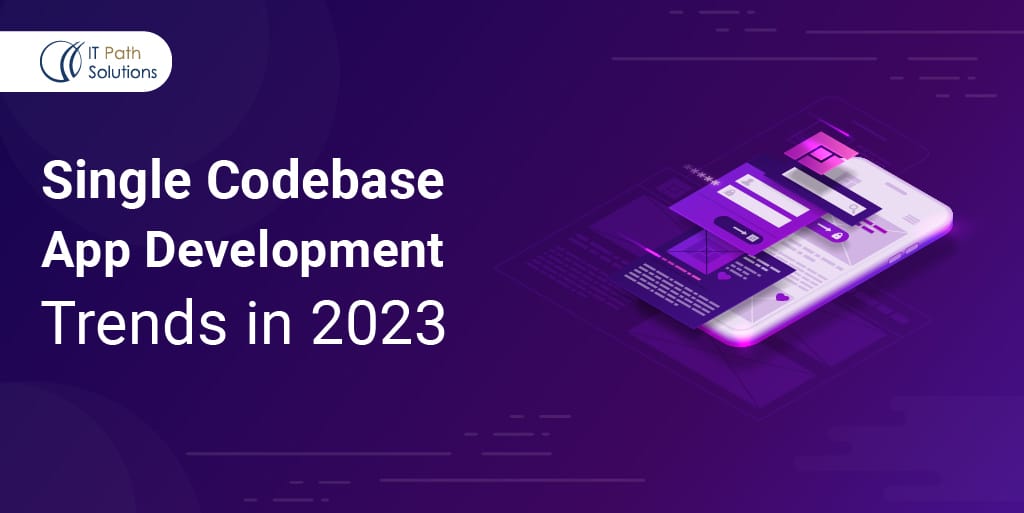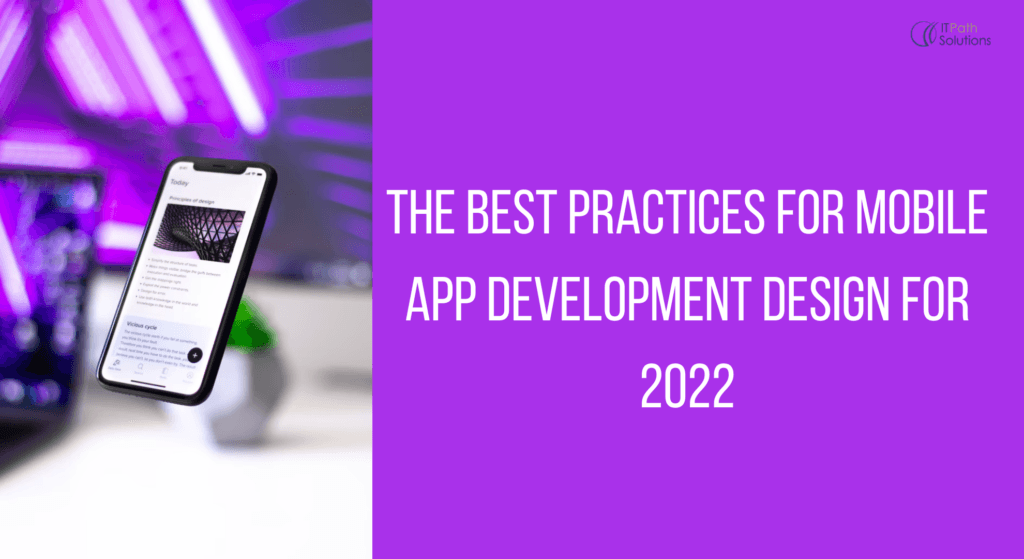The Power of Kotlin Multiplatform Mobile (KMM)
Uncategorized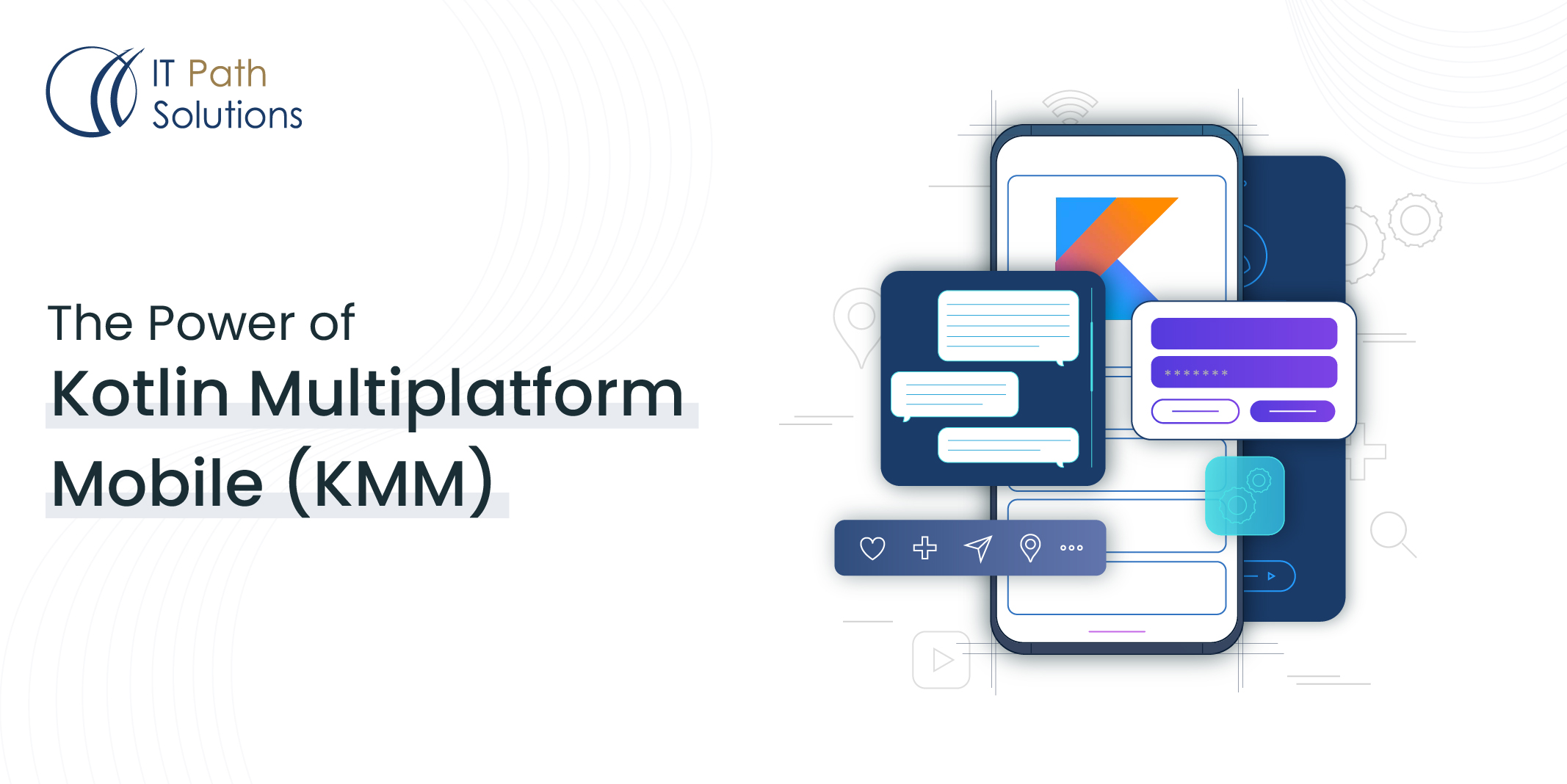
In the ever-evolving world of mobile app development, Kotlin Multiplatform Mobile (KMM) is emerging as a game-changer. Kotlin Multiplatform Mobile is changing the landscape of mobile app development. It offers a streamlined and efficient way to build apps for multiple platforms while maintaining code consistency. KMM allows Kotlin developers to write code once and deploy it across multiple platforms, offering a more efficient and cost-effective solution for app development. In this blog, we’ll explore the incredible power of Kotlin Multiplatform Mobile and how it’s revolutionizing the app development landscape.
Easy Integration
Kotlin Multiplatform Mobile (KMM) offers a seamless transition into your existing Android projects, allowing you to adopt it at your own pace. You don’t need to dive headfirst; instead, you can ease into it gradually. Begin by sharing smaller components that make sense for your project, giving you the opportunity to get accustomed to the KMM workflow.
As you become more confident and experienced with KMM, you can progressively extend its usage until you eventually achieve a fully shared codebase. This flexibility empowers developers to strike a balance between leveraging the advantages of cross-platform development and maintaining the familiarity of their existing Android projects.
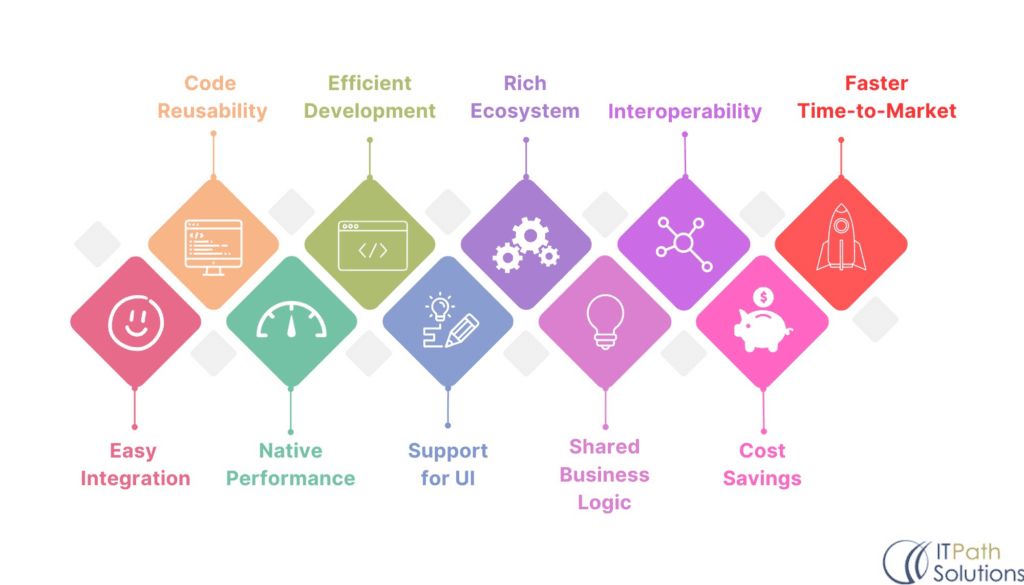
Fig-1 Power of KMM
Code Reusability
One of the most remarkable aspects of KMM (Kotlin Multiplatform Mobile) is its remarkable ability to empower developers to write code that seamlessly operates across various facets of your mobile app. Whether you’re tackling intricate business logic, efficient data management, or the intricacies of networking, KMM has got you covered. This shared codebase is nothing short of a game-changer in the world of app development.
By allowing you to use the same codebase across different platforms, KMM significantly reduces redundancy in your development process. This means you can say goodbye to writing and maintaining separate code for iOS and Android, saving you time and effort. But the benefits don’t stop there. KMM also ensures consistency between platforms, so you can maintain a uniform user experience for your app users, regardless of their device.
Moreover, this shared codebase simplifies the daunting task of app maintenance. With fewer lines of code to manage and fewer chances of errors creeping in, you’ll find that keeping your app up-to-date and bug-free becomes a breeze. In essence, KMM not only streamlines your development workflow but also enhances the quality and reliability of your mobile applications. It’s a win-win for developers and users alike.
Native Performance
Unlike certain cross-platform solutions that heavily depend on web-based technologies, KMM (Kotlin Multiplatform Mobile) takes a different approach. It empowers developers to harness the unique strengths of each platform it targets.
With KMM, you have the incredible advantage of tapping into the native capabilities, APIs, and libraries of the platforms you’re working with. This remarkable feature ensures that your application can maintain the speed, performance, and user experience that users typically associate with native apps. At the same time, KMM provides the invaluable benefit of code sharing, allowing you to streamline development efforts and reduce redundancy, ultimately saving you time and resources. In essence, KMM offers the best of both worlds, enabling you to create high-quality cross-platform apps that are both efficient and user-friendly.
Efficient Development
Picture a scenario where developers collaborate on a unified codebase, simplifying the complexity of managing separate codebases for both Android and iOS platforms. This is precisely what Kotlin Multiplatform Mobile (KMM) brings to the table. With KMM, the development process becomes more streamlined, resulting in faster development cycles and reduced maintenance overhead. This not only saves valuable time but also enhances the overall efficiency of the development team.
By leveraging KMM’s capabilities, developers can focus more on building exceptional features and user experiences, while worrying less about the intricacies of platform-specific code. In essence, KMM empowers teams to work smarter and more cohesively, ultimately leading to more robust and agile app development.
Support for UI:
While KMM (Kotlin Multiplatform Mobile) primarily emphasizes the importance of sharing business logic across different platforms, it’s worth noting that it doesn’t neglect the user interface aspect. Thanks to the emergence of SwiftUI for iOS and Jetpack Compose for Android, developers now have the ability to extend code sharing to include UI components as well. This is an exciting development in the world of mobile app development because it enables you to streamline and unify your user interface across multiple platforms, which ultimately leads to a more consistent and efficient development process.
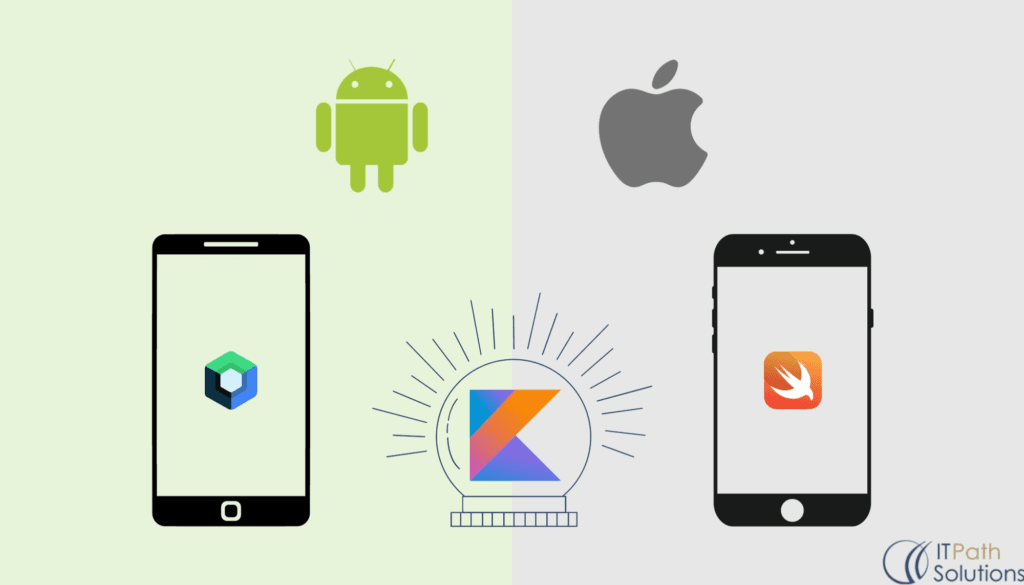
Fig.-2 KMM supports shared UI codebase
By harnessing SwiftUI and Jetpack Compose, you can create a shared UI codebase that reduces redundancy and ensures a coherent user experience. This means that changes and updates to the user interface can be implemented more swiftly and consistently across both iOS and Android platforms. Moreover, it simplifies the maintenance process, as you only need to make updates in one place, and they will propagate seamlessly to all supported platforms.
The inclusion of SwiftUI and Jetpack Compose in KMM’s toolkit opens up a wealth of possibilities for developers. It not only enhances code sharing but also promotes collaboration between iOS and Android development teams. This synergy between platforms not only saves time and effort but also allows for a more synchronized approach to app development. As a result, KMM, with its focus on both business logic and UI, empowers developers to build cross-platform applications that are efficient, consistent, and user-friendly.
Rich Ecosystem
Kotlin offers a vibrant and dynamic ecosystem that opens up a world of possibilities when you embrace Kotlin Multiplatform Mobile (KMM). With KMM, you gain access to a rich array of libraries and tools that can supercharge your development process. Among these, you’ll find well-loved favorites like Retrofit, Room, and kotlinx.serialization, which seamlessly integrate into your KMM projects. These libraries have proven themselves across the Android and Kotlin community, offering robust solutions for tasks like network communication, local data storage, and efficient data serialization.
By harnessing the power of KMM alongside these trusted tools, you’re not just building mobile apps; you’re crafting versatile, high-quality software that can reach both Android and iOS audiences with ease.
Shared Business Logic
KMM, short for Kotlin Multiplatform Mobile, is your trusty companion when it comes to sharing the behind-the-scenes magic of your app. Think of it as the secret sauce that makes your app tick. It’s the place where you can share all the technical wizardry that makes your app work seamlessly, from the intricate business logic that powers your features to the data models that hold your app’s essential information, and even the networking code that connects your app to the digital world. In other words, it’s your one-stop-shop for code-sharing excellence.
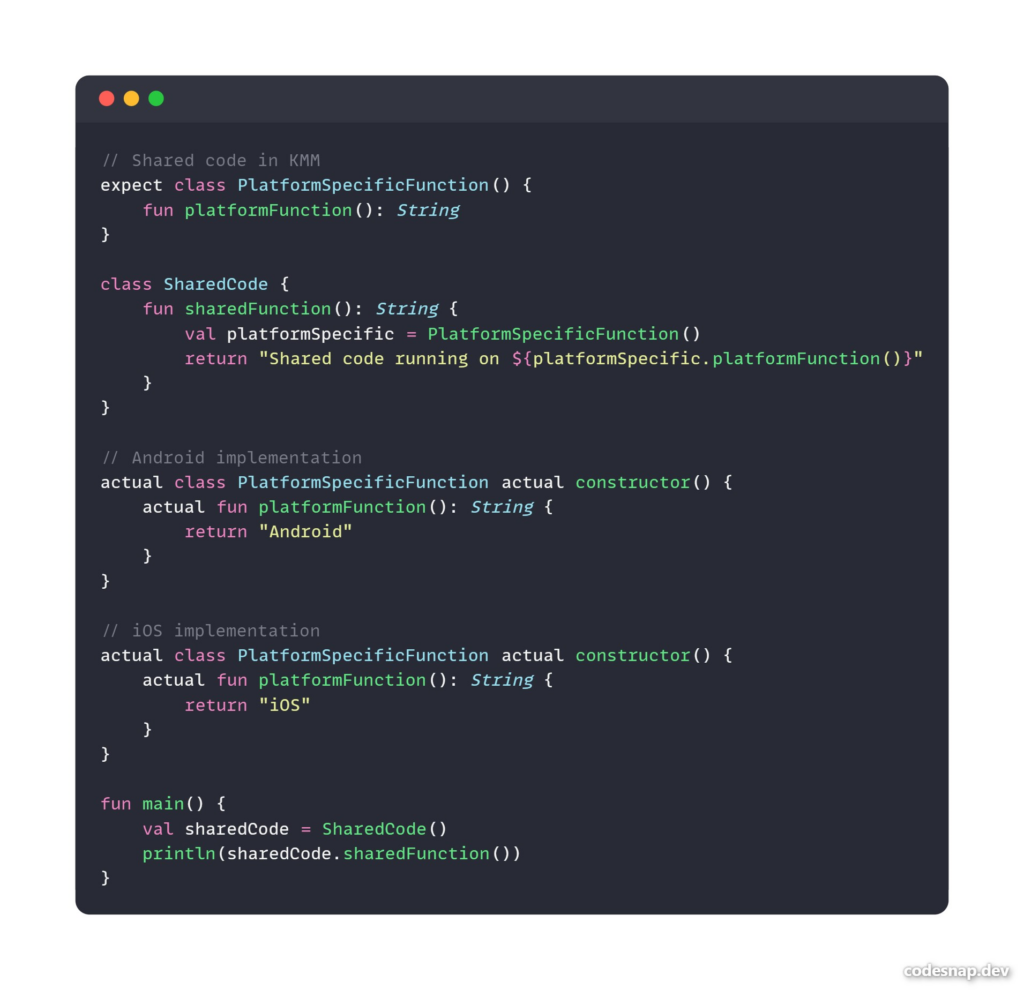
Fig.-3 Shared business logic snippet
With KMM, you’re not just saving time and effort; you’re also maximizing your code-sharing potential. This means fewer duplicated lines of code, less room for error, and a more efficient development process overall. So, whether you’re building for iOS, Android, or any other platform that Kotlin supports, KMM is your go-to tool for streamlining your development workflow and ensuring that your app performs at its best across the board. It’s like having a coding sidekick that helps you focus on what truly matters – creating a fantastic user experience.
Interoperability
Kotlin Multiplatform Mobile (KMM) is designed to be incredibly user-friendly when it comes to working with your existing Android and iOS projects. It’s like adding a new member to your development team who’s adaptable and works well with others.
KMM seamlessly integrates into your current projects, ensuring a hassle-free transition. You don’t need to make abrupt changes; instead, you can gradually introduce KMM into your codebase, making it a comfortable and gradual shift. It’s like adding a versatile tool to your toolbox, one that effortlessly complements your existing set of tools. So, you can continue building amazing apps with the added convenience of KMM.
Cost Savings
Kotlin Multiplatform Mobile (KMM) offers a fantastic way to reduce the costs associated with app development and ongoing maintenance. In the world of mobile app development, time is money, and KMM helps you save both. By allowing you to write code that can be shared across different platforms, like Android and iOS, you’re essentially cutting down on the development effort required. This means your development team can work more efficiently, reducing the time it takes to bring your app to market.
But the benefits don’t stop there. KMM also simplifies the maintenance process. When you only have to maintain a single codebase, it’s far less complicated than juggling multiple codebases for different platforms. This streamlines updates, bug fixes, and feature enhancements. As a result, you’ll save money not only during the initial development phase but also in the long run as you continue to evolve and improve your app.
So, KMM is more than just a cost-saving tool; it’s a strategic investment that can make your mobile app development journey smoother, more efficient, and ultimately, more cost-effective.
Faster Time-to-Market
When you incorporate code sharing into your development strategy, the benefits are nothing short of remarkable. Imagine the ability to introduce fresh, cutting-edge features on both Android and iOS platforms simultaneously. This streamlined approach to releasing updates not only accelerates your development cycle but also gives you a significant edge in the fiercely competitive market. By reaching your audience faster and offering a consistent user experience across devices, you’re not just keeping up with the competition – you’re leading the charge into the future of mobile app innovation.
Conclusion
In conclusion, Kotlin Multiplatform Mobile (KMM) is a game-changer in the world of mobile app development. As we’ve explored throughout this blog, its potential is nothing short of transformative. With KMM, we have the opportunity to revolutionize the way we create mobile applications, and it’s a moment that we shouldn’t overlook.
By embracing KMM, we unlock the ability to share code effortlessly between platforms, a feat that not only streamlines development but also saves valuable time and resources. This technology allows us to break down the barriers between Android and iOS, enabling us to reach a wider audience in the market and cater to a diverse user base with greater efficiency.
The time has come for developers and businesses alike to harness the power of KMM. It’s not just a trend; it’s a strategic move toward more efficient, cost-effective, and impactful mobile app development. By adopting KMM, you position yourself on the cutting edge of innovation in the mobile app world.
So, don’t wait any longer. Start exploring KMM, experiment with its capabilities, and be part of the movement that’s reshaping the future of mobile app development. The benefits are clear, the potential is boundless, and the time is now to seize this opportunity and make your mark in the mobile app landscape.
 Healthcare
Healthcare  Education
Education  Real Estate
Real Estate  Logistic
Logistic  Fitness
Fitness  Tourism
Tourism  Travel
Travel  Banking
Banking  Media
Media  E-commerce
E-commerce  Themes
Themes
 Plugins
Plugins
 Patterns
Patterns




